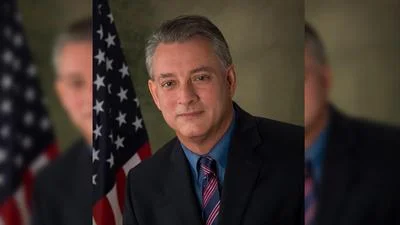Michael S. Regan 16th Administrator, United States Environmental Protection Agency | Official Website
On May 22, the U.S. Environmental Protection Agency (EPA) announced over $225 million in funding to enhance access to safe and reliable drinking water and wastewater services for American Indian Tribes and Alaska Native Villages. This funding, part of President Biden’s Investing in America Agenda, represents one of the largest annual investments in water infrastructure for Tribes. It aims to advance public health and environmental protections by addressing issues such as lead service lines and emerging contaminants like PFAS.
“The Biden-Harris Administration is committed to ensuring that Tribes across the country have access to clean and safe water, and thanks to the Investing in America Agenda, we are making more progress than ever before,” said Acting Assistant Administrator for Water Bruno Pigott. “With this announcement, Tribes will be able to access funding for critical public health improvements ranging from lead service line replacement to get the lead out of drinking water to installation of wastewater infrastructure to protect public health and improve water quality in lakes, rivers, streams and oceans.”
The FY 2024 funding will be distributed through several programs:
- $69.4 million via Clean Water Indian Set-Aside through Bipartisan Infrastructure Law and annual appropriation funds.
- $133.8 million via Drinking Water Infrastructure Grants Tribal Set-Aside through Bipartisan Infrastructure Law and annual appropriation funds.
- $19.3 million via Emerging Contaminants in Small or Disadvantaged Communities Tribal Grant Program through Bipartisan Infrastructure Law funds.
- $2.85 million via Small, Underserved, and Disadvantaged Communities Tribal Grant Program through annual appropriation funds.
Previously, EPA's funding has supported various initiatives for Tribes and Alaska Native Villages including establishing clean wastewater treatment systems, reducing pesticides in waterways crucial for fish consumption, and providing backup power sources for wastewater systems during extreme weather events.
Examples of investments made possible by President Biden’s Investing in America Agenda include:
- The Tohono O’odham Nation received $1,586,000 for a new arsenic treatment facility serving 1,014 homes.
- The San Carlos Apache Tribe was awarded $985,778 for constructing two new groundwater wells due to E. coli contamination.
- The Fallon-Paiute-Shoshone Tribe received a $1,787,500 forgivable loan for enhancing a wastewater treatment lagoon.
- The Nez Perce Reservation received $2 million for reducing pesticides infiltrating waterways benefiting salmon consumption.
- Eight tribes in California were allocated $600,000 for backup power generators following wildfire-related power losses.
- The Muscogee (Creek) Nation was granted $989,000 to upgrade an overloaded wastewater treatment lagoon system serving over 200 homes.
Further details on EPA’s Tribal Water program can be found on their website.
Background information includes the establishment of various programs such as:
-The Clean Water Indian Set-Aside program under the 1987 amendments to the Clean Water Act which provides planning, design, and construction funding for wastewater systems.
-The Drinking Water Infrastructure Grants Tribal Set Aside funded from the Drinking Water State Revolving Fund supporting tribal water infrastructure improvements.
-The Small, Underserved, and Disadvantaged Communities Tribal Grant program created under the WIIN Act supporting tribal drinking water needs.
Additionally,
the Alaska Rural and Native Villages (ANV) Grant Program offers financial support for high-priority drinking water and wastewater facilities alongside training programs aimed at sustainable water systems with a FY 2024 allocation of $39 million.
Infrastructure projects under these programs are primarily implemented in partnership with the Indian Health Service as part of the Tribal Infrastructure Task Force (ITF).





